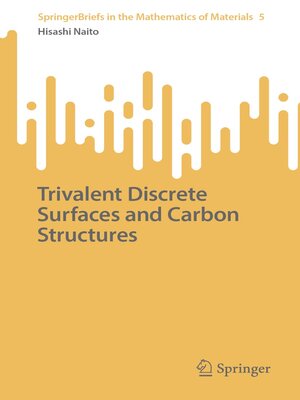Trivalent Discrete Surfaces and Carbon Structures
ebook ∣ SpringerBriefs in the Mathematics of Materials
By Hisashi Naito

Sign up to save your library
With an OverDrive account, you can save your favorite libraries for at-a-glance information about availability. Find out more about OverDrive accounts.
Find this title in Libby, the library reading app by OverDrive.



Search for a digital library with this title
Title found at these libraries:
| Library Name | Distance |
|---|---|
| Loading... |
This book discusses discrete geometric analysis, especially topological crystallography and discrete surface theory for trivalent discrete surfaces. Topological crystallography, based on graph theory, provides the most symmetric structure among given combinatorial structures by using the variational principle, and it can reproduce crystal structures existing in nature.
In this regard, the topological crystallography founded by Kotani and Sunada is explained by using many examples. Carbon structures such as fullerenes are considered as trivalent discrete surfaces from the viewpoint of discrete geometric analysis. Discrete surface theories usually have been considered discretization of smooth surfaces. Here, consideration is given to discrete surfaces modeled by crystal/molecular structures, which are essentially discrete objects.
In this regard, the topological crystallography founded by Kotani and Sunada is explained by using many examples. Carbon structures such as fullerenes are considered as trivalent discrete surfaces from the viewpoint of discrete geometric analysis. Discrete surface theories usually have been considered discretization of smooth surfaces. Here, consideration is given to discrete surfaces modeled by crystal/molecular structures, which are essentially discrete objects.







